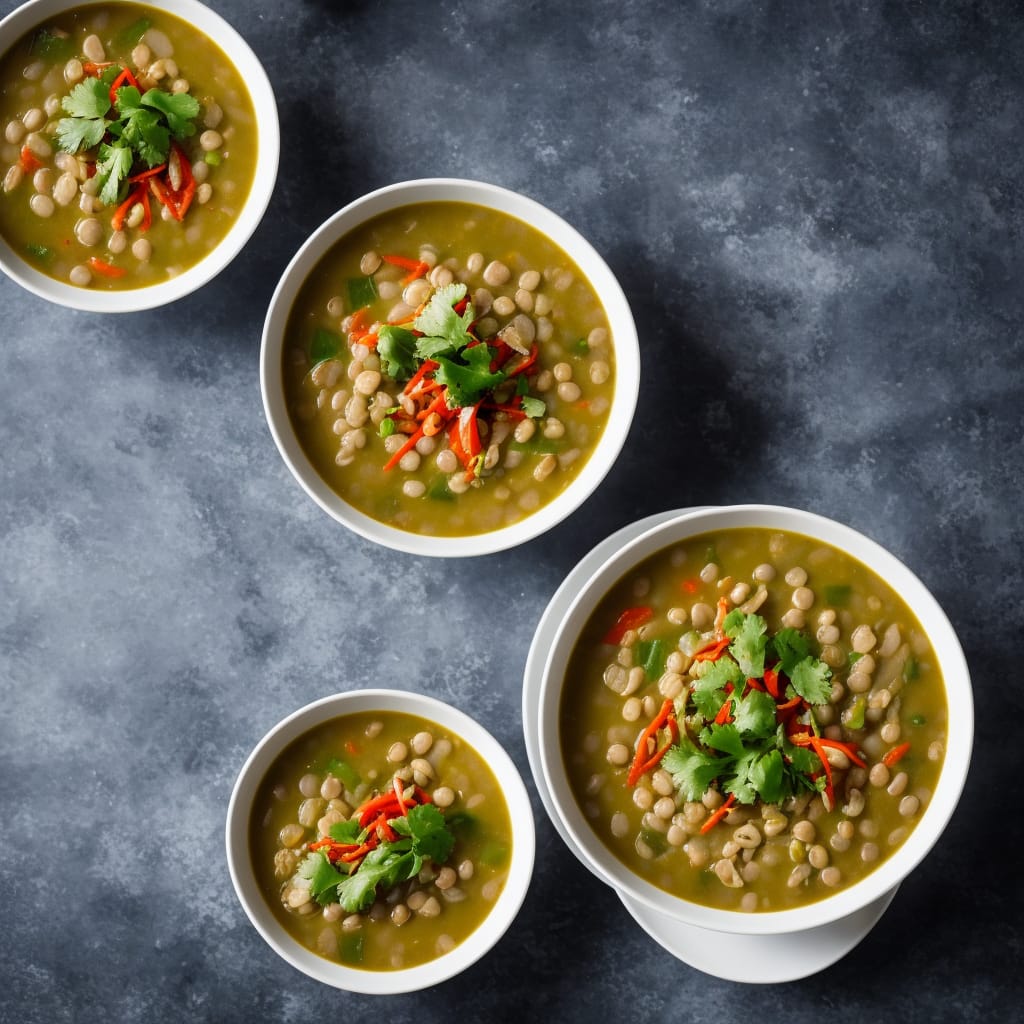Mongo Guisado Mung Bean Soup: A Hearty Filipino Classic
Mongo Guisado Mung Bean Soup is a traditional Filipino dish with deep cultural roots. It’s known for its simplicity, nutritional value, and comfort. Originating in the rural regions of the Philippines, this soup became a staple due to the accessibility of mung beans and local vegetables. Families often enjoy it during lunch or dinner, pairing it with rice. The dish not only reflects the resourcefulness of Filipino cuisine but also serves as a touchstone for family gatherings and communal meals.
- Mung Beans: These small, green legumes form the base of the soup, providing protein and fiber.
- Pork: Often used in bite-sized pieces, pork adds depth and savory richness.
- Garlic: Enhances the dish with its aromatic properties.
- Onion: Adds sweetness and complexity while balancing the flavors.
- Tomato: Provides acidity and freshness, brightening the soup.
- Fish Sauce: Supplies umami and saltiness, integral to the soup’s taste.
- Bitter Melon or Squash: Offers a slight bitterness or sweetness, depending on the vegetable, contributing to the overall flavor profile.
These ingredients, when combined, create the distinct, hearty flavor that sets Mongo Guisado Mung Bean Soup apart.
How to Prepare Mongo Guisado Mung Bean Soup
Step-by-Step Cooking Guide
Cooking Mongo Guisado Mung Bean Soup involves several key steps to ensure the dish captures its traditional flavor. Start by washing 1 cup of mung beans thoroughly. Boil them in 4 cups of water until they soften. This usually takes around 30–40 minutes. While the beans cook, heat 2 tablespoons of oil in a large pot over medium heat. Sauté 3 minced garlic cloves, 1 diced onion, and 2 chopped tomatoes until they become fragrant and tender.
Add 1/2 pound of sliced pork to the pot and sauté until the meat browns. Pour in 1 tablespoon of fish sauce and continue to cook for a few more minutes. Once the mung beans are soft, add them to the pot along with their cooking liquid. Simmer for 10 minutes, stirring occasionally.
Finally, add 1 sliced bitter melon or 2 cups of diced squash. Cook for an additional 10–15 minutes until the vegetables are tender. Season with salt and pepper to taste. Serve hot with steamed rice.
Tips and Variations
Adjust the flavor profile of your Mongo Guisado Mung Bean Soup by experimenting with different ingredients. For a spicier version, add sliced chili peppers. Incorporate coconut milk during the final simmering step to create a creamier texture. Substitute pork with shrimp or chicken for a different protein source.
Ensure the mung beans don’t overcook to maintain their texture. Soaking the beans for a few hours before cooking can reduce their boiling time. When using bitter melon, remove the seeds and soak the slices in salted water to lessen their bitterness. Opt for vegetarian versions by excluding the meat and adding more vegetables like spinach or eggplant.
By following these steps and tips, you can create a Mongo Guisado Mung Bean Soup that suits your preferences while preserving its traditional essence.
Nutritional Benefits of Mongo Guisood Mung Bean Soup
Health Benefits
Mongo Guisado Mung Bean Soup offers several health benefits that make it a desirable addition to your diet. Mung beans are rich in protein, providing your body with essential amino acids necessary for muscle building and repair. High fiber content enhances digestion and promotes a healthy gut. Iron present in mung beans supports proper red blood cell function and helps prevent anemia. Additionally, the dish contains vitamins A and C, which are crucial for immune system health and maintaining skin health. Notably, the inclusion of vegetables like bitter melon adds antioxidants that combat free radicals, reducing the risk of chronic diseases.
Dietary Considerations
Mongo Guisado Mung Bean Soup can be adapted to fit various dietary needs. It’s naturally gluten-free, making it suitable for those with gluten intolerance or celiac disease. The dish can be tailored for vegetarians if meat is omitted or replaced with plant-based proteins like tofu or tempeh. For a low-sodium diet, use reduced-sodium broth and limit fish sauce quantity. If you’re watching your fat intake, opt for lean cuts of pork or substitute with chicken breast. This adaptability ensures that Mongo Guisado Mung Bean Soup aligns with your specific dietary goals, providing a versatile and nutritious meal option.
Serving and Presentation Ideas
Accompaniments
Pair Mongo Guisado Mung Bean Soup with steamed rice. Rice balances the soup’s savory flavors and adds a filling component to the meal. Serve with a side of pickled vegetables like pickled radish or cucumber to introduce a tangy contrast. For a complete Filipino experience, offer a side of daing na bangus (milkfish) or fried pork belly. These protein dishes complement the soup’s textures and flavors.
Plating Techniques
Present Mongo Guisado Mung Bean Soup in a deep, wide bowl. This allows diners to appreciate the soup’s vibrant colors from the mung beans, vegetables, and meats. Garnish with chopped scallions or fried garlic to add visual appeal. Sprinkle some crispy shallots or chicharon bits for added texture. For a rustic touch, serve in wooden or earthenware bowls, reflecting the dish’s traditional origins.
Conclusion
Mongo Guisado Mung Bean Soup stands as a testament to the rich culinary heritage of the Philippines. Its simplicity, nutritional benefits, and adaptability make it a cherished dish in many households. Whether you’re looking for a comforting meal or a dish to showcase Filipino culture, this soup offers a flavorful and wholesome experience. Pair it with traditional sides and serve it in rustic bowls to elevate your dining experience. Enjoy the warmth and nourishment that Mongo Guisado brings to your table.






